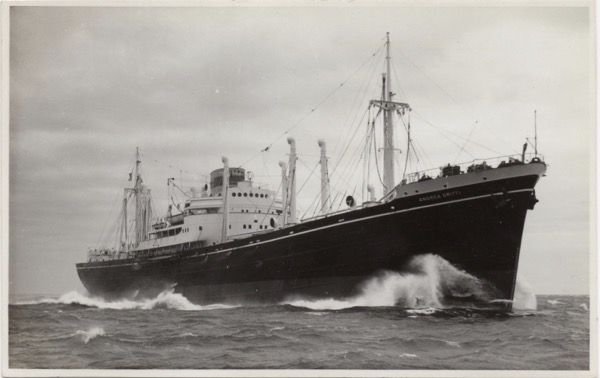Background
The picture below was posted on the Missing Lynx forum by JPWaller. It comes from the German federal archives (the Bundesarchiv), and shows the port of Naples dated 12 June 1941. The tanks that are the key object of the picture are a number of German Panzer III and at least one Panzer IV tank (if you squint really hard you can see it in the back), neatly lined up on the quayside.

What are we looking at?
The tanks we see here on the quay were the first replacement tanks covering operational losses in North Africa. Replacements dispatched in early April covered the tanks lost or damaged in the hold fire on the German merchant Leverkusen in early March 1941.
These tanks were all allocated to the German logistics office called Nachschubstab 683 (the dedicated logistics staff for the German army ground forces in North Africa) instead of a specific unit, as they were replacement tanks for vehicles lost during operations in North Africa. They would be allocated by the command staff of the Deutsches Afrika-Korps once they had reached North Africa, depending on unit needs.
In terms of variant, as member Nacho on Missing Lynx points out, the front three vehicles are two uparmoured Panzer IIIH, with 30+20mm frontal armour (the original 30mm and a bolted on 20mm face-hardened plate), and the third is a Panzer IIIJ with a single, face-hardened 50mm plate. These tanks were a serious problem for the British standard gun, the 2-pdr (see this older post) as they could not be penetrated at typical combat ranges over the frontal arc. If these vehicles went to Panzerregiment 5, which at the time was equipped with the older Panzer IIIG model with only 30mm of frontal armour, they would have provided a welcome addition to its arsenal. It is in my opinion likely that the tanks where no identification can be made are of a similar type, as the Panzer IIIG was no longer produced at this time.
These tanks were to sent to North Africa in three shipments, with one Panzer III going on the German merchant Preussen on 15 June, eight unknown Panzers on the German merchant Ankara, and four unknown Panzers on the Italian Poeti-class merchant Andrea Gritti in the same convoy as Ankara. All of them reached North Africa. See this older post.
Poeti-class modern and fast merchant Andrea Gritti, lost to air attack from Malta off Sicily 3 September 1941. Flickr.
What was the shipment for?
Given the date, it is clear that these tanks pre-date possible consideration of German losses in the BATTLEAXE operation, which only commenced a few days later. It is also unlikely that they covered losses suffered during German operation SKORPION, which re-took Halfaya Pass from Empire forces in the last days of May 1941. Allocating tanks from production and shipping them to be ready in Naples in just two weeks is a feat I doubt the German military bureaucracy was capable of. It would therefore be reasonable to suppose that these were replacements for the initial losses suffered around Tobruk during the Easter and early May battles, and possibly during the BREVITY offensive.
Some musings
The fact that there were only 13 tanks should not be taken as confirmation that only 13 tanks were completely lost during these operations. Production bottlenecks, prioritisation of the forthcoming attack on Russia over the campaign in North Africa and/or transport bottlenecks on the way to Italy could all be reasons for why fewer tanks are seen here than may have been lost.
Furthermore, it is likely that the German repair crews in North Africa attempted the recovery of every last tank they could get their hands on, if only to be able to use it for spares, and thereby keep other worn out or battle-damaged tanks running.
Nevertheless, the fact that 5.leichte/21.Panzerdivision’s Panzerregiment 5 entered combat during CRUSADER with just over 120 tanks (35xII, 68xIII, 17xIV), instead of the normal order of battle of 136 (45xII, 71xIII, 20xIV) indicates that a number of losses of the early phase were not made good prior to CRUSADER, but also that there seems to have been a major effort to keep the medium tanks Panzer III and IV variants going.
The other thing the picture tells us is that there was apparently no worry in Naples about attacks by the Royal Air Force. The tanks are closely placed, and even a single bomb could have hit many of them.


